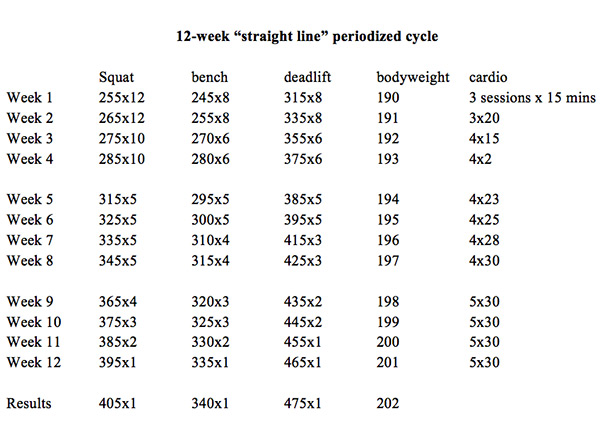
Personal Training in 2019
Technology makes the impossible possible for personal training.
The best way in which to coach another is to train with that person or attend every training session. For personal training, so much of successful coaching is based on visual impression; it is one thing to hear a person's words or read the stats generated in the workout, however it is quite another to see the athlete in action, up close and personal. I trained with national and world champions, world record holders, for twenty straight years. We would mercilessly critique each other on technique because we knew that honing technique was a surefire path of progress. By becoming technically proficient our performance improved to a dramatic degree in the various progressive resistance exercises. Improved technique enabled us to handle more poundage, which in turn resulted in strength increases and muscle and power gains.
Exercise critique requires you have an archetypical signature technique to compare ongoing efforts against. The school of strength I was raised in established technical archetypes, ideal techniques for the barbell squat, bench press, deadlift, overhead press, power clean, row, etc., this occurred back in the 1960s. In every training session I was expected to improve my technique, move it closer to the archetype. I would compare my technique to the technique template; as a coach I would compare and contrast the efforts of the athlete in the just-completed set with the ingrained technical ideal handed down to me by my strength mentors. I would offer corrections and suggestions based on what I saw.
It would be impossible to offer competent coaching and personal training advice deprived of the visual component. If presented with nothing but the numbers, i.e. the exercises, the sets, the reps and poundage alone, the data would be too dry and too abstract and too many wrong conclusions could be drawn. Without seeing the set, the coach wonders, did the athlete manhandle the new personal best in the deadlift of 405 for 5 - or was it a technical abomination, sloppy and awkward, barely done, badly done and potentially injurious?
The next best thing to being with the athlete in person during the personal training session is having a perfect movie of the athlete. If a trainee can provide me with a clear video of them performing top sets, the maximal efforts in each training session, I can offer damned good ‘best-next-move" advice. Anyone that can provide me with a crisp, perfectly-framed video of their maximum training efforts enables me to make an intelligent coaching decision. Technology makes the formerly impossible (competent coaching done remotely) possible.
When trainees send me their top-set videos, I ask that the video angle be taken from where I would stand in the gym if I were there in person. I seek a camera angle in relation to the lifter that allows for optimal observation of the technique and optimal observation of degree of effort and intensity utilized. I take in the technique but I also take in the man - does he dominate the poundage or does the poundage dominate him? The video tells me everything I need to know.
- For the squat and deadlift, I prefer a camera angle that looks at the lifter from a 3/4 front view. The camera is set at belly-button height; allowing me to optimally see depth, knee/ankle/shin position and torso uprightness.
- In the bench press, a 3/4 view shot standing, between the feet and the arms looking down at the bencher is ideal.
By being able to see the maximum effort, I can make an intelligent choice for the following week: if the athlete was scheduled to handle a 255 lb. barbell for five reps in the paused bench press, and the bencher handled the scheduled 255 with casual ease, then that would dictate one course of action, as in full steam ahead, onward and upward to 260 or 265 for 5 in the following bench workout. Conversely, if the lifter struggles mightily and barely makes the 5th rep with 255, then the prescription could be 260-265 for a triple, or 225 for 10. By having the video of the final effort in each lift, I am able to ‘remote coach' and make the same choices I would have made had I actually been there.
I work with deployed American warfighters when they are in Afghanistan or Africa. Spec Ops fighters tend to work at night leaving them to fill their time during the day. A sizable portion comes back from deployment in better shape (they are always, to a man, in shape) then when they left. While deployed, they have time on their hands, decent gym facilities, plenty of training partners and are allowed a singular focus on fitness and fighting not obtainable back in the real world of family, kids and the never-ending flurry of stateside activity. In the bush, the mountains or the desert, isolated and a little bored - when better to undertake a hardcore, full-bore muscle-building, strength-infusing progressive resistance training program?
Periodization is based on a strategy of ‘eating the elephant one bite at a time.' Each man will have a different starting point, a different set of pre-existing conditions and individualized limiting circumstances. Each man will have a different goal. The key to attaining full and complete periodized success is to set realistic goals. A 165 pound man is not going to add 100-pounds to his bench press in twelve weeks. That is unrealistic. However an athletic 165 pound soldier can add 30-pounds, a full 10% to his bench, pushing him from 300 to 330. This would not be unrealistic. Periodization pursues parallel goals in definable categories simultaneously and systematically.

On all exercises, warmup with as many sets as needed and then perform the top set as specified for that week.
- Squats: use ass-on-heels depth for 1st four weeks. Shift to 5-rep sets and use competition depth (below parallel, no more than) The trainee ends up squatting 405, 17% increase
- Bench press: precise and strict. By cycles end the trainee ends up benching 340, a mighty 13% increase.
- Deadlift: use the purposefully slowed deadlift negative. The early weeks groove in technique and establish momentum. By cycles end the trainee pulls 475, a 17% increase.
- Bodyweight is pushed upward each week by one pound, no more, no less. Up the "clean calorie" intake each successive week.
- Cardio is done to keep weight gains lean; fitter, bigger, more muscular, leaner.
Technology to the rescue
As a coach, a lifting coach, a strength coach, a transformational coach, ideally, optimally I need to see the athlete perform in order to coach, to judge, to make assessments, to offer helpful advice and proper and appropriate course corrections - without seeing the athlete in action, there are too many unknowable's that make offering advice risky, counterproductive and potentially disastrous. Incredibly, technology has enabled everyone to have the ability to video their training. Anyone with a phone and a modicum of light can shoot a wonderfully crisp garage gym training movie.
I have trainees I work with shoot videos of their top set in each of the lifts each successive week for 12 weeks of personal training. They e-mail it to me; I see everything: I see the technique, I see the degree of effort required, I see the physique of the athlete and I see demeanor and attitude. It is like being in the room. I am the proverbial fly on the wall. I don't ask them to film the warmups, just the big set of the session in each lift. I review these videos and once a week we talk by phone. I have the visual input from the videos and now I am talking to the athlete; we speak about what has happened and about what is about to happen - how they did and what's expected in the coming week.
I hold them accountable. Everyone goes like gangbusters out of the personal training starting blocks; the real work begins in the second four weeks of the cycle. This center section of the cycle is the core of the cycle. Mastery of the middle weeks virtually ensures the final four weeks will be successful. Week #5 is when the newness and fun factor wears off and the athlete/soldier is faced with the grind. The template works every time the tenants are enacted with the requisite exactitude, ferocity and tenacity.
Marty Gallagher is available for remote personal training. He will work with a limited number of serious individuals. Contact him is you are interested in engineering your very own radical physical transformation. marty@ironcompany.com
About the Author
As an athlete Marty Gallagher is a national and world champion in Olympic lifting and powerlifting. He was a world champion team coach in 1991 and coached Black's Gym to five national team titles. He's also coached some of the strongest men on the planet including Kirk Karwoski when he completed his world record 1,003 lb. squat. Today he teaches the US Secret Service and Tier 1 Spec Ops on how to maximize their strength in minimal time. As a writer since 1978 he’s written for Powerlifting USA, Milo, Flex Magazine, Muscle & Fitness, Prime Fitness, Washington Post, Dragon Door and now IRON COMPANY. He’s also the author of numerous books including Purposeful Primitive, Strong Medicine, Ed Coan’s book “Coan, The Man, the Myth, the Method" and numerous others. Read the Marty Gallagher biography here9

